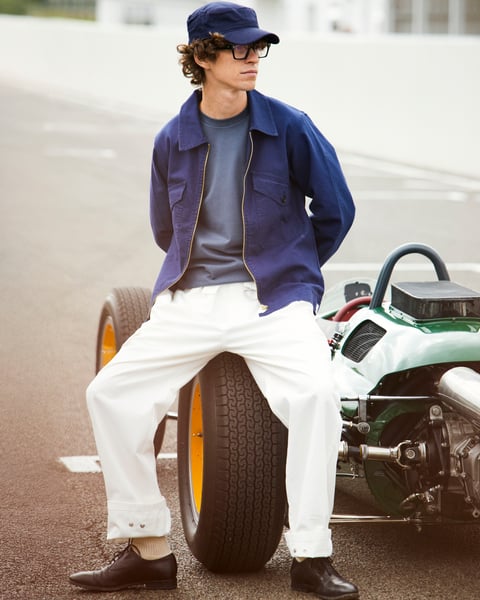The birth of Audi's Maybach rival | Axon's Automotive Anorak
The new car observers among you may have spotted the facelifted 2022 Audi A8 appearing in various motoring media in recent days, and a damn fine car it looks to be too. The more observant or curious of you might have even spotted mention of a new top-of-the-range stretched mega-luxury edition of the refreshed Audi, the A8 Horch, as just unveiled at the Guangzhou Auto Show. The A8 Horch is to be reserved exclusively for the buoyant Chinese new car market, where around 60 per cent of Audi’s total global flagship A8 sales are currently made.

Blatantly aimed squarely at the jugular of the top-line rival Mercedes-Benz S-Class Maybach models, this new plush A8 derivative revives the Horch name in a rather more considered and discerning way than the Daimler Group did when it attempted to relaunch the Maybach marque in the late 1990s. This Maybach comeback was launched into a world that neither knew or cared about the significance of the Maybach name and its role within Mercedes-Benz history. The brand’s revival was a complete flop with the stand-alone marque name dropped by 2012.
The fact that the 21st Century Maybach 57 and 62 models looked like misjudged and ill-conceived elongated Rover 75s (yet without the British saloon’s grace and timelessly-subtle design qualities) certainly didn’t help Maybach’s case, just as its launch timing and impact coincided with the more striking and superior Goodwood-built Rolls-Royce Phantom, thus blighting the already-weak Mercedes business case for the Maybach brand’s reintroduction as well.
If the Maybach brand name was (and remains) a mystery to most potential buyers (now just consigned to a sub-brand for various range-topping Mercedes models), the history of the Horch marque is possibly just as unknown and obscure, particularly to would-be wealthy Chinese new luxury car prospects that probably have little idea, knowledge or appreciation of this marque’s once-proud history (China building its very first car sometime after the Horch name had been laid to rest the first time around in the 1950s).

Audi’s revival of the Horch name has a certain irony as Audi simply wouldn’t exist were it not for the latter prestige marque’s founder – August Horch – who originally established the Audi name (Latin for ‘hear’) in 1910 following his hostile co-directors throwing out of his own Horch & Cie car company that he founded in Cologne in 1900, following a brief stint working as an engineer at Benz in the late 19th Century.
August Horch managed Audi until 1928 when Rasmussen took over, and in 1932, Audi became part of the formation of Auto Union. The four rings of the now familiar Audi logo symbolise this 1932 Auto Union merger (a sort of pre-war German BMC/British Leyland-style of formation), which consisted of the joining of the four previously individual car marques of Horch, DKW, Wanderer and Audi, with the latter killed off in 1939/40 with the outbreak of War. The Audi marque name was revived once more in 1965 though, with the German brand going on to become the only remaining name from the Auto Union quartet still in use.
As the originator and predecessor of today’s revived and staggeringly successful Audi marque (as re-introduced after a 25-year absence when Auto Union’s then short-term owner Mercedes-Benz shifted emphasis away from the previous DKW brand name with Volkswagen acquiring the rights to the Audi name), Audi has gone to thrive under Volkswagen (including taking over NSU in 1969, but then killing off that maker in 1977), later joining its established domestic prestige German rivals Mercedes-Benz and BMW as a very serious player in the executive motoring scene.

As for the Horch name itself, following the cessation of hostilities in 1945, the premium car maker found itself still located at its former Zwickau factory, suddenly now located in the new socialist state of East Germany (DDR), due to the sectioning of Germany into the new separate Communist East and democratic West nations.
Horch was hastily nationalised by the DDR in 1945, and in 1956, now part of the AWZ Sachsenring automotive consortium (along with the former DRW-based IFA operation) that also built the infamous two-stroke Trabant DDR ‘people’s car!”, due to the complications of using the Horch marque name the large mid-1950 2.4-litre P240 prestige saloon was re-branded as Sachsenring, particularly in the few western export markets where the DDR’s most luxurious car was sold. After around just 1,300 units, all Horch production by Sachsenring had ground to a halt by 1959 as the Communist regimes of the era could not support or justify an expensive six-cylinder limousine.
The Horch name did very briefly resurface in 1969 though on a one-off P240 Phaeton ‘Reprasentant’ soft-top DDR state parade limousine, only to rapidly disappear again, until this month with the revival of the Horch name as a sub-brand on the most prestigious and costly flagship variant of revised 2022 Audi A8 model range in the ‘ultimate’ communist state; the People’s Republic of China. Oh the irony!
Axon's automotive anorak
Audi
A8
Horch





